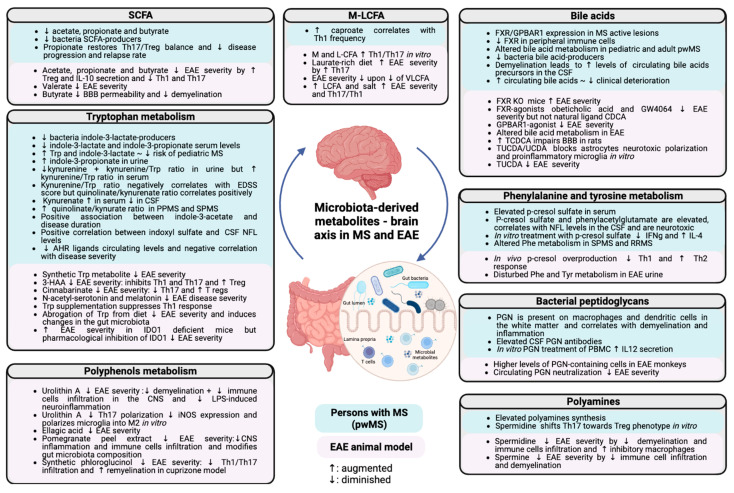Figure 1.
Implications of the different microbiota-derived metabolites in MS pathogenesis. The main concepts described in this review are summarized and separated between human and mice data. SCFAs, short-chain fatty acids; EAE, experimental autoimmune encephalomyelitis; BBB, blood–brain barrier; IL, interleukin; Th, T helper; Treg, regulatory T cell; MCFAs, medium-chain fatty acids; LCFAs, long-chain fatty acids; VLCFAs, very-long-chain fatty acids; FXR, farnesoid X receptor; GPBAR, G-protein-coupled bile acid receptor; CSF, cerebrospinal fluid; KO, knock-out; TCDCA, taurochenodeoxycholic acid; TUCDA, tauroursochenodeoxycholic acid; UCDA, ursochenodeoxycholic acid; NFL, neurofilaments; IFN, interferon; Phe, phenylalanine; SPMS, secondary progressive multiple sclerosis; RRMS, primary progressive multiple sclerosis; Tyr, tyrosine; PGN, peptidoglycan; PBMC, peripheral blood mononuclear cells; iNOS, inducible nitric oxide; IDO, indoleamine 2-3 dioxygenase; Trp, tryptophan; 3-HAA, agonist 3-hydroxyanthranilate; AHR, aryl hydrocarbon receptor. Augmented: ↑; diminished: ↓.

